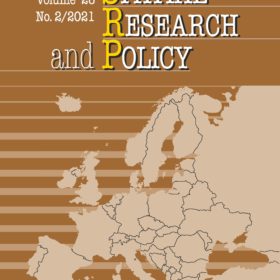
The interrelationship between structure and agency has long been in the centre of the planning debate: the structuralist perspective focused on a regulatory structure as an arena for the manoeuvre of rational actors, while network-oriented post-structuralism exceeds such a rigid duality. However, as both approaches fail to fully address complex urban problems, can recognising individual differences be crucial for dealing with power imbalances?
The agency has been traditionally considered one of the critical elements that constitute planning. As informed by structuralist planning theory, the agency designated the medium to conceive, formalise, and implement planning decisions under the given structures composed of legal, hierarchical, and procedural orderings. In ideal terms, the agency stood for a public body in charge of protecting the public interest in stable social and planning systems.
However, under overall uncertainty, a globalised world faces growing societal turbulences. In urban planning, challenges have been brought mainly by strengthening the neoliberal ideology. Accordingly, the essence of agency shifted towards multiple stakeholders, alternative power centres, and negotiation of public interest instead of taking it for granted. What is the public interest in contemporary urban planning and development? Whose is the public interest? How is it created, and by whom? Such questions significantly affect what we consider ‘agency’ in contemporary urban planning.
People as Subjects in the Planning Processes
To tackle the growing polarisation in power relations and focus on intrinsic problems and features of a place, it is necessary to look beyond an immutable agency as part of the given (political, economic, social) system. Collaborative planning addressed this by emphasising the value of cultural diversity (specific traditions, norms, and attitudes). Nevertheless, focus on actor-networks, the power of good argument, and a tendency towards the common interest neglect the power of individual interventions. To fill this gap, an actor-centred approach highlights individuals’ capacity to interpret rules according to personal motivations. Such an approach acknowledges individuals – their knowledge, skills, experiences, beliefs, attitudes, emotions, and intentions – as an active subject of the system or process. Most importantly, an actor-centred approach overcomes the flaws of both structuralist and post-structuralist views by designating living people as agents of societal change.
Living in the era when the place-based approach (as proposed in some of the key strategic planning documents) has been recognised as a counterweight to the globalisation challenges, only the unity between culturally embedded structural, institutional aspects and the human capital of individual agents gives hope for success in tackling uncertainties of a highly shaken world.

Dr. Ana Perić is a senior researcher and lecturer at the Chair for Spatial Development and Urban Policy (SPUR). Her research focuses on processes and practices of stakeholders’ collaboration in addressing complex spatial problems. Observed through the lens of planning theory, methods, and empirical tools, Ana Perić studies the nature and implementation of various collaborative procedures and their consequences for social learning and democratic urban governance.
